 If you take a closer look at the fruit counters of the supermarkets nowadays, you will find blueberries and strawberries all year round, even red currants are now offered throughout most of the year. However, blackcurrants are hardly ever found, if at all, and there is no trace of jostaberries. The latest generations of these black fruits have the opportunity to end their current Cinderella existence and become more than just a niche within a niche...
If you take a closer look at the fruit counters of the supermarkets nowadays, you will find blueberries and strawberries all year round, even red currants are now offered throughout most of the year. However, blackcurrants are hardly ever found, if at all, and there is no trace of jostaberries. The latest generations of these black fruits have the opportunity to end their current Cinderella existence and become more than just a niche within a niche...
Cassissima® – the better tasting blackcurrants
All blackcurrants originating from the Lubera® breeding programme are marketed under the group brand Cassissima®.
The current varieties have little in common with the varieties of yesteryear, and 'yesteryear' was not so long ago. If you look back just a few decades, the fruits of blackcurrants were nothing more than small, black berries with a harsh and prickly taste, and only suitable for processing. They were eaten only in case of emergency, barely edible and only processed as juice or jam – because it was known that they are healthy...
Lubera®'s many years of breeding efforts have now ensured that the taste experience of blackcurrants has changed very much for the better. This tart taste has given way to a much milder flavour complex with more sugar and, depending on the variety, with a more or less intense cassis aroma, which is also to some extent decisive for blackcurrants. But not only in terms of taste, there has been significant progress: the size of the individual fruits could be significantly increased. Thus, we currently have a fruit size of up to 20 mm in diameter, which is already close to the range of today's cultivated blueberries.
Significant progress has also been made in the area of plant health. A few decades ago, blackcurrants were considered to be more susceptible to powdery mildew than red currants. Today, the Cassissima® varieties from Lubera® have a very high tolerance, if not resistance.
The current Cassissima® assortment
The current Cassissima® range is characterised by extremely healthy and tasty varieties. There is something for everyone in terms of taste, from varieties with low acidity and a mild cassis aroma to varieties with lots of sugar and an intense cassis flavour.
Cassissima® Blackbells® – the most beautiful and longest strings
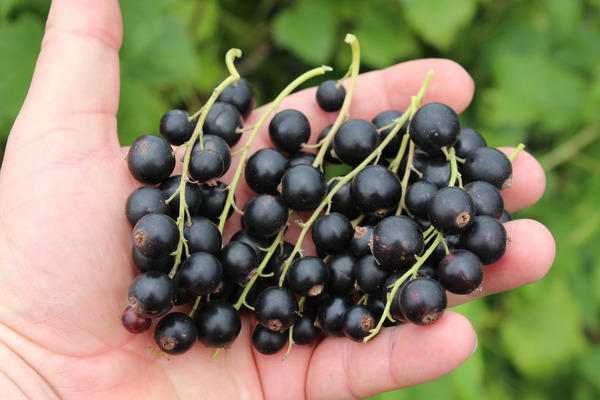
Picture: the fruits of the black currant Cassissima® Blackbells®
With this variety, we have succeeded in significantly improving three crucial characteristics: sweeter berries, longer strings and larger individual fruits.
Short description:
- Maturity: medium ripening from early to mid-July
- Fruits: large fruits on long strings, easy to pick, up to 15 berries per string
- Flavour: pleasant, mildly sweet with a good cassis aroma; should only be harvested when fully ripe
- Growth/health: medium strong and upright, broad growth, mildew resistant
Cassissima® Black Marble® – the biggest of the big berries
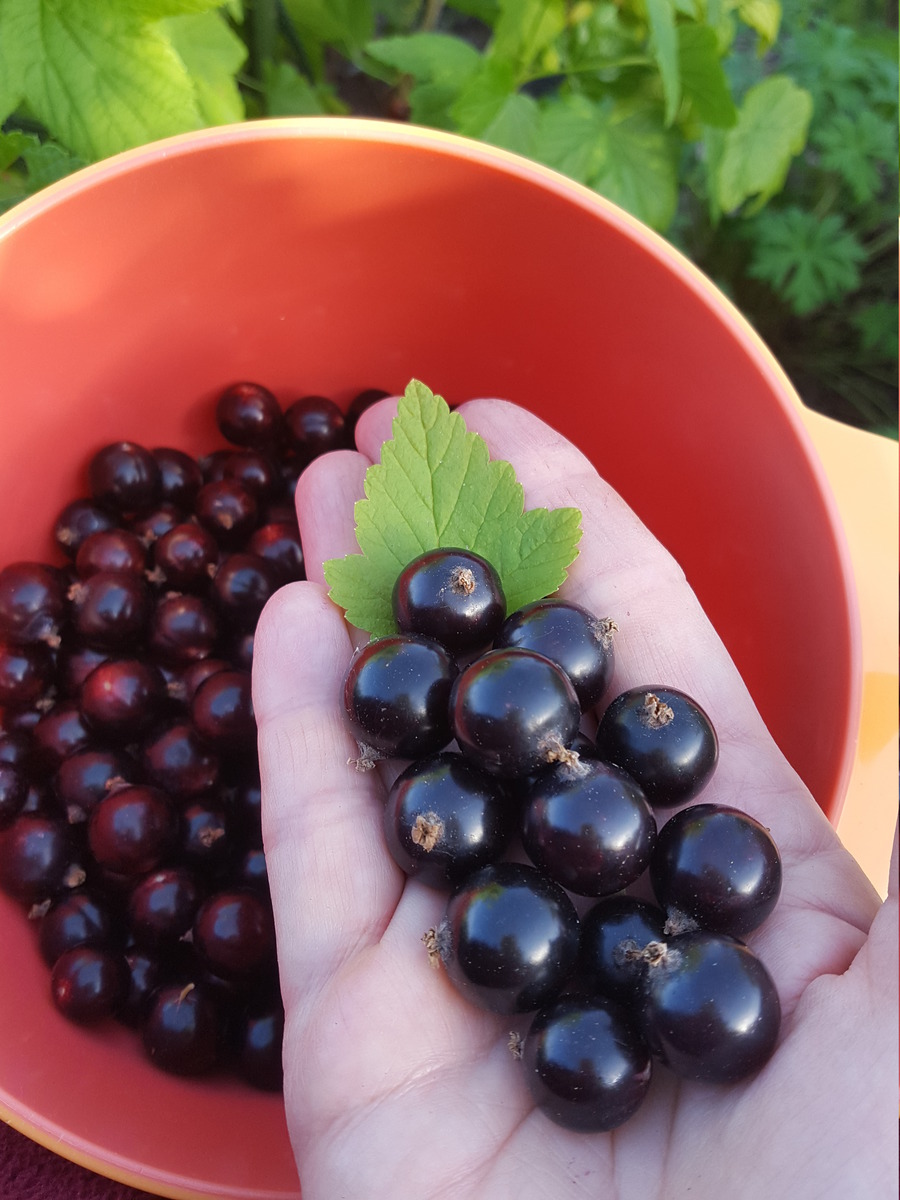
Picture: the single fruits of the black currant Cassissima® Black Marble®
In our assortment, Cassissima® Black Marble® is the variety with the largest fruits. In fact, taken as a whole, it is one of the largest in the world, if not THE largest. The fruit size results in a very positive ratio between the flesh and seed content, culminating in a special eating experience.
Short description:
- Maturity: very early, one of the earliest varieties
- Fruits: by far the largest fruit in the assortment, well over 1 cm ø is possible; it is no longer the clusters that are harvested but the individual fruit
- Flavour: mild, sweet and juicy; a special eating experience due to relatively low seed content in the fruit
- Growth/health: very healthy, mildew resistant, with foliage that is still attractive in autumn
Lowberry® Little Black Sugar® – compact and sweet
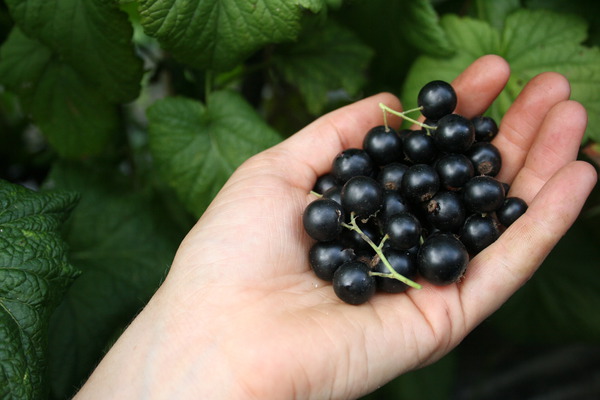
Picture: the sweet fruits of the compact black currant Lowberry® Little Black Sugar®
This is the most compact blackcurrant from the Lubera® breeding programme with a tight and upright habit but a final height of less than 1 m. Therefore, this variety is very suitable for growing in a container on a balcony or terrace. Due to the very high sugar content and the intense cassis aroma, Lowberry® Little Black Sugar® is a very tasty variety.
Short description:
- Maturity: very early ripening
- Fruits: large individual fruits on medium-length strings
- Flavour: extremely high in sugar, with a distinct cassis aroma
- Growth/health: upright and compact growth, mildew resistant, <100 cm
Black'n'Red® Premiere® – the first currant with ornamental red leaves
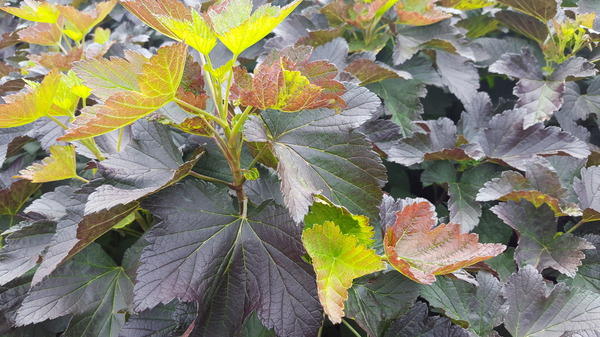
Picture: the red foliage of the black currant Black'n'Red® Premiere®
Lubera®'s breeding efforts are also always aimed at integrating ornamental characteristics into conventional berry varieties. So far, unfortunately, it has not been possible to combine the inflorescences of the blood currant with the fruiting characteristics of the blackcurrant. Instead, there has been another unexpected breakthrough in breeding, combining blackcurrants with wine-red foliage. At the beginning, the plants sprout green but due to the sunlight as the year progresses, the leaves become darker and darker. Finally, after the harvest of the fruit, the leaves have reached their darkest colouration.
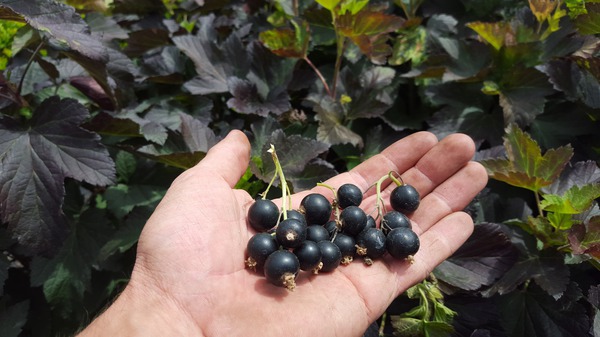
Picture: the fruits of the red-leafed black currant Black'n'Red® Premiere®
Short description:
- Maturity: mid-July, rather late ripening in comparison
- Fruits: medium-sized fruits
- Flavour: intense sweet taste, with mild cassis aroma
- Growth: medium-strong, slightly spreading growth, very good leaf health
- Characteristics: the first cassis variety worldwide with a red colouring of the leaves
The future of black currants – the goals of Lubera® breeding
We see anything but black for the future of Cassissima® currants. On the contrary, we even forecast a rosy future – not in terms of fruit colour, of course, but for the further development of varieties and variety characteristics. In the future, we see blackcurrants as a snack fruit that is in no way inferior to cultivated blueberries in terms of fruit size and could even surpass them. The berries are no longer just processed, but enjoyed fresh. The individual berries, which soon resemble blue grapes in size, are eaten individually as a healthy fruit snack. We have already largely achieved this variety ideal with the two varieties Cassissima® Blackbells® and Cassissima® Black Marble.
But the breeding continues, of course, and will push further boundaries, especially in the area of blackcurrants. In the current breeding populations, there are plants with fruit sizes of around 20 mm in diameter. Also due to a steadily increasing sugar content of the fruits, sometimes with more and sometimes with less cassis aroma, deposited with mild acidity and thus also with a lot of fruitiness, this equally robust and tasty fruit can leave its Cinderella image behind and gain significantly more importance again. Our goal is to breed varieties that combine resistance to powdery mildew, fruit sizes around 2 cm and a high sugar content with the possibility that the berries can be harvested not on the strings but, like blueberries, one berry at a time (but simply and efficiently by stripping the ripe fruit from the fruit branch by hand) without the fruit bleeding at the base of the fruit stalk. Currently, the furthest developed in this direction is already Cassissima® Blackbells®.
